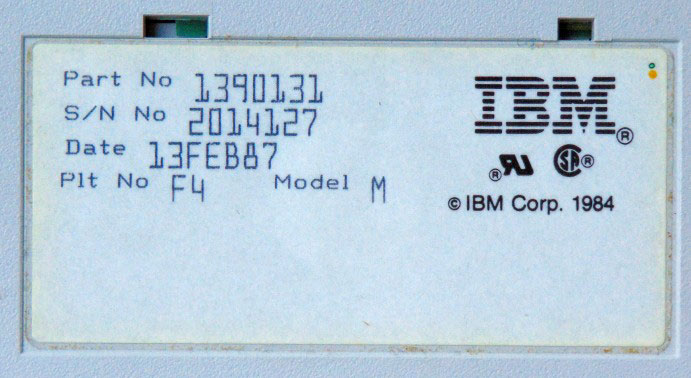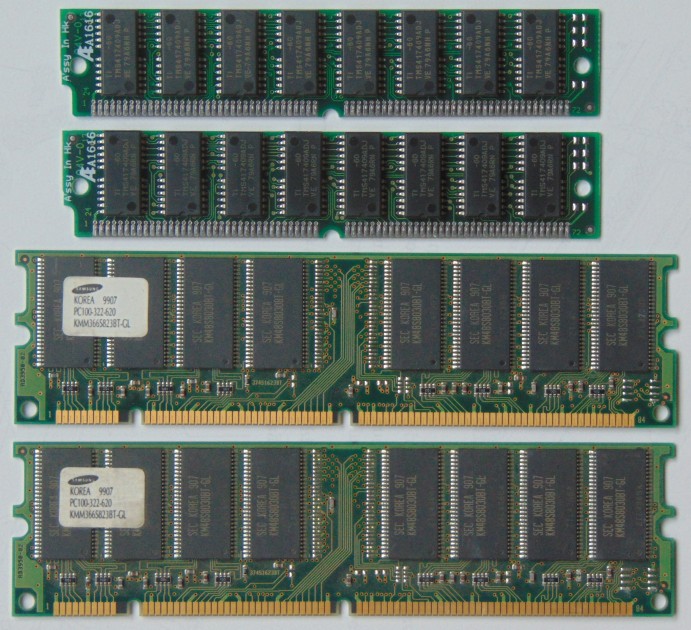|
In this issue FROM THE FORUMS: Resolved! HARDWARE: Does an old personal computer become useless? Additional articles in the PLUS issue • Get Plus! WINDOWS 11: Windows 11 22H2: Which new features stand out? LEGAL BRIEF: The Council of Truth and Wide Diversity PATCH WATCH: 22H2 not ready for consumers
FROM THE FORUMS Resolved!
By Susan Bradley We’ve added a much-requested enhancement to the forums. Our forums exist not only because technology is annoying at times, but also because it can be very difficult to find the solution to a particular problem. We’ve been lacking a feature to guide you in the right direction, and now we’ve added it — the ability to post a response in a forum to indicate that the answer to your question has been found. The original author of a post in the forums now has the ability to indicate that someone else’s post in the topic represents a solution to a problem. To do so, the author returns to the original post, edits it, and selects RESOLVED from the dropdown (Figure 1).
The author can also start a new post in the thread, perhaps to thank the person finding the solution or to add additional information, and can also set RESOLVED there. Thereafter, the topic will be clearly marked with a RESOLVED banner so it will easily stand out (Figure 2).
This feature is still under development to alter it slightly and add some new features. But I wanted to tell you about it now, to expand the number of readers giving it a try and to get additional feedback. Note: This feature is available only in the forum sections dedicated to questions and answers. It is not available for topics associated with newsletter articles or in the knowledge base section. Knowledge base topics
Speaking of which, did you know that we have a forum section devoted to “Knowledge Base” topics? We do! The section includes topics we add when we realize that many readers will look for the same information. Rather than cluttering up the forum with repeated questions, the Knowledge Base section offers one-stop information. One example: I’ve put information about how to block Windows updates by using Registry keys, providing the keys and values needed to do so. We keep adding new topics to this section. Do you have a “frequently asked question” whose answer is of broad value? Let us know, and we’ll add resources for you.
Susan Bradley is the publisher of the AskWoody newsletters. HARDWARE Does an old personal computer become useless?
By Ben Myers Come take a ride in my souped-up DeLorean for an adventure in the days before Windows. You see an old computer and ask, “Why hasn’t it been scrapped?” But don’t look at just the PC — look at what it does within some total system. That’s what this story is about. The ride takes many twists and turns on the path to where we are today. Progress over the last 20-plus years is hard to believe. An old computer shows up
One day, a young man appeared at my door, carrying most of a computer. There was no cover, and its boards had been removed. He told me that he had tried to repair the clicking disk drive by taking it apart to fix the click, but his repair did not work. (My, what a surprise!) Then he asked me whether I could get MS-DOS running on the computer. He told me simply that the computer was needed to “run a machine.” He also said that the computer used a “parallel” keyboard, in addition to the boards that were once inside, and asked whether I had such a keyboard. I could tell he was, er, not very experienced with computer hardware, so the first step was to see what he had brought to me. What have we here?
Close inspection revealed a baby-AT form factor motherboard, the predecessor of the ATX (AT eXtended) format still in wide use today, 25 years later. It’s a Tyan S1590S motherboard (Figure 1) with four 16-bit ISA slots, three PCI slots, and one AGP slot. It accepts two types of memory. A bit later, I learned that the processor was a speedy 100MHz Intel Pentium. Here’s a quick refresher on bus types. ISA stands for Industry Standard Architecture, designed by IBM. PCI stands for Peripheral Computer Interconnect, developed by Intel and friends in the mid-1990s and continuing in updated forms to this day, including (importantly) today’s NVMe solid-state drives. AGP stands for Accelerated Graphics Port, a variant of PCI to allow higher performance for graphics cards. Fortunately, the board had no leaking or bulging capacitors or other signs of impending failure, and the processor cooling fan spun freely.
Now to the first mystery. What on earth is a “parallel keyboard?” This was quickly solved when I found a conventional (for the era) circular opening on the rear of the case. It turned out to be the DIN5 connector (left) first introduced with the IBM XT in 1983 and shortly thereafter included with the IBM AT. (Later, IBM created the PS/2 style of connector, which dominated the PC market until USB came along and took over the world.) I was in luck! I happened to have one of those “parallel” keyboards, a beautiful old IBM 101-key Model M keyboard with the large DIN5 connector. The keyboard (Figure 2), manufactured in 1987 (Figure 3), was even older than the computer itself. Perfect! I plugged in the keyboard, connected a monitor to the VGA connector, flipped the power switch on the chassis — and the computer started right up. The keyboard keys worked as they ought, with the usual otherworldly Model M tactile feel. (Did I mention that my main tower computer has its own IBM Model M?)
The owner of the computer told me his company needed it to control a machine to fulfill current customer contracts for manufactured parts. I gave him a ballpark price for the work and said I would do what I could to get the computer into complete working order, as soon as I could. The motherboard had two (2) four-megabyte 72-pin SIMMs (single in-line memory modules), an astonishing (again, for the era) eight megabytes. DOS itself runs only in the lower megabyte of memory, using most of that space due to clever manipulation of drivers and full-time, memory-resident programs. But my mantra is that you can never have too much memory. So I went to my box of scrap memory and retrieved a pair of matching 32MB 168-pin SDRAM (synchronous dynamic random access memory) DIMM (dual in-line memory module) sticks of PC-100 speed, installed them, and ran the MEMTEST-86 diagnostic through several cycles to make sure the memory was good. I also changed out the CMOS battery for a new one. Figure 4 shows the memory sticks together, for comparison.
Relearning MS-DOS
While awaiting delivery of the missing boards, I decided to use MS-DOS 6.21, not the later DOS 7 packaged with Windows. In a computer-controlled machine, DOS could run all by itself. Then too, the young fellow had not mentioned Windows, only telling me how difficult the DOS commands were. (How soon we forget.) First, I downloaded the three-diskette MS-DOS 6.21 set from WinWorld. Then I scrounged a working 120MB 3.5” PATA/IDE hard drive from my box-o’-drives. (PATA stands for Parallel AT Attachment, while the newer IDE stands for Integrated Drive Electronics.) By either name, one or two of these drives can attach with a data cable directly to the motherboard. I cabled the IDE drive to the computer and proceeded to install MS-DOS. This did not go well, as the 1.44MB floppy drive in the system could not read the diskettes. Helpfully, it also managed to render them unreadable. I replaced the floppy drive with one of my own, rebuilt the three diskettes, and tried to run through the complete DOS installation after prepping the motherboard BIOS with the number of heads, tracks, and sectors on the hard drive. But no joy — the DOS FORMAT command failed, claiming numerous bad sectors on a heretofore flawless drive. Next, I downloaded a nice MS-DOS 6.21 ISO from allbootdisks.com and burned it onto a CD. Oops! The system did not have an optical drive, so I retrieved a PATA/IDE CD-ROM drive and another IDE data cable to go into the second IDE port on the motherboard. Once again, I attempted to install DOS 6.21, but with the same unpleasant result. I began to wonder whether this elderly DOS could perhaps not handle large drives. Searches with Google revealed nothing definitive, so I went back to my hard-drive box and found a Hitachi drive with a jumper setting to limit its capacity, as sensed by the motherboard BIOS. The original white vertical jumper in Figure 5 made the drive the master (i.e., primary, meaning first seen by the BIOS) drive attached to the drive cable. The white horizontal jumper in the photo limited drive capacity to 32GB (“32GB CLIP”), because Hitachi anticipated that one might need to use a large-capacity drive with a more limited operating system during those years.
Finally! I had DOS 6.21 installed on a 504MB partition on the Hitachi drive. The CONFIG.SYS and AUTOEXEC.BAT files control how DOS boots up, so I created them with the DOS text editor and, very tediously, no mouse. No más no mouse! My use of DOS needed the HIMEM.SYS driver to use memory above one megabyte and a device driver for the CD-ROM drive in CONFIG.SYS. I also edited AUTOEXEC.BAT to include directives for a PATH=C:\DOS statement to access all the DOS programs easily, and the MSCDEX.EXE program to assign the D: drive letter to the CD-ROM drive. (Man, this is old stuff.) Getting the boards on board
The missing boards finally showed up in a large container: four ISA bus boards and a PCI graphics card for the computer, a foot-high stack of engineering documentation, and floppy diskettes labeled for each board. One board controlled the large machine I had not yet seen. Another board provided the interface for a Genovation keypad used with the machine. The last two boards, manufactured by Keithley Instruments, monitored temperature and humidity inside the machine. I installed the boards in the computer, placing them according to a photo taken at the company before the boards were all removed, as seen in Figure 6.
Making sure all the boards were working properly with their software enlarged the scope of this project significantly. The 3.5” diskette for the Genovation keypad proved defective, but the Genovation website still had the software available to download and install. Good! One board ought to work. Next, the software for a special board that controlled the main machine was on a set of three diskettes, defective and with no download available, of course. The FLOREC floppy-disk recover tool, available from SourceForge, came to the rescue with a two-step process. FLOREC creates an image file of a floppy diskette, ideally with all useful information intact, as shown in Figures 7 and 8. On my own Windows 10 system, I created new floppy diskettes from FLOREC’s image files, using RawWrite for Windows, available from chrysocome.net. I ran the install program from the diskette that had the latest file-creation dates. Of course, the software assumes that the only important CONFIG.SYS and AUTOEXEC.BAT information is all its own, so it wiped out my carefully contrived DOS startup files. So what? That’s two boards working and two to go.
Playing instruments with Keithley tunes
One board, the Keithley Instruments DAC-02 two-channel analog board, had a readable diskette, so I was able to install its software. The other one, a Keithley DAS-8 with analog, digital, and timer interfaces, had perfectly unreadable 3.5” floppies, even with the help of FLOREC. Unlike the Genovation software, the old Keithley software could no longer be found on the Internet, not even on the Wayback Machine. I contacted various resellers of older industrial hardware, and they all sold just the naked DAS-8 board without any software. Time for eBay, the last-resort flea market for old computer gear. I found several sellers of DAS-8 boards, and one seller responded that the diskettes were included in the sale! Excitedly, I ordered the package for a little over $100 and waited a few days for it to arrive. Sure enough, the package contained a DAS-8 board, the manuals for the board, and two sets of diskettes — one 3.5” and the other 5.25” — doubling my odds of having working software. Naturally, the 3.5” diskettes were defective, so I grabbed two more of my relics, a 1.2 megabyte 5.25” floppy drive (Figure 9) and a cable with a compatible 5.25” connector, to replace the 3.5” floppy drive temporarily. I copied the contents of the 5.25” floppies quickly, before they mysteriously became unreadable, then transferred the data onto 3.5” floppies, finally assuring that the DAS-8 software installer would run. Throughout, I also built an archive on my own computer of all the software needed on the DOS machine.
Back to the future, for real
I am never satisfied with a spinning hard drive, so I felt it was necessary to get an SSD into the computer. Here’s how I did it. I put a brand-new 60GB Intel mSATA (micro SATA) SSD inside a 2.5” IDE notebook container, mating it to a tiny converter board. The latter converted the 44 pins of a laptop IDE drive into a 40-pin standard IDE connector and a 4-pin Molex 5v/12v power connector. Once the 2.5” drive was mounted on a metal bracket 3.5” wide, the entire assembly replaced the Hitachi drive. Figure 10 shows similar individual pieces, none expensive, and Figure 11 is the completed SSD assembly mounted inside the chassis. Last of all, I copied the entire DOS partition from the Hitachi hard drive to the SSD. That 100MHz Pentium computer runs blindingly fast with an SSD! More importantly, the odds of SSD failure are as close to zero as you can get.
Testing with the big machine
At my client’s company, I spent a non-stop day inside a static-free, environmentally controlled, noisy room with this computer connected to a very large machine, maybe 25 feet long and 7 feet high. What the machine does is confidential, but the engineer who knew it well told me that the combination of computer and machine cost about $200,000 when purchased back in 2001. Other than the hard-drive failure, the company has cared for its machine extremely well and it has produced finished products reliably all these years. You and I can guess how much a replacement would cost, but I can imagine that the price tag would be north of seven figures. (My fee, suitably large, was a pittance by comparison.) I had to configure the Keithley DAS-8 board for real, so that its software would match the ports used according to seven on-off switches on the board (Figure 12). The DAS-8 manual listed the usage of the ISA bus ports for standard hardware and showed which ports were available for use by a nonstandard ISA board such as the DAS-8. With ISA and DOS, there is no clever handshaking among board, motherboard, BIOS, operating system, and drivers to set up the board. It took some trial and error for the DAS-8 configuration program to agree with the actual switch-block settings. Then, I edited CONFIG.SYS and AUTOEXEC.BAT again to deal with all the hardware.
Finally, the computer monitor showed temperature, humidity, and other data from the machine — and everyone smiled. When I checked again last week, the computer and machine together had finished two batches of the company’s product with zero failure of finished parts. Only a few simple tasks remain. There’s always a good reason why old computers are still running
Whether a smaller business like this one, a military installation, a bank, or a government agency, old computers continue to run. There are often numerous reasons for using them, reasons with many zeroes in either replacement costs or lost revenue — assuming a replacement is even possible. So look at the whole system, not just that elderly computer whirring along, and think about how to get these elderly beasts more into the future, substituting more modern and reliable technology when possible. It is hard to comprehend over 20 years of progress
Computer speeds and capacity today are far, far greater than they were at the turn of the century. Processor and storage speeds have grown by only a factor of 50, but memory and storage capacities have grown in multiples of thousands. Figure 13 compares representative speeds and capacities then and now. Eight-megabyte computers were once enough to do the DOS work, but today’s most powerful desktops and laptops take advantage of 64 gigabytes of memory, sometimes more. Removable floppy diskettes barely over one megabyte in capacity have long been supplanted by thumb-sized USB flash-memory sticks that are now 256GB or more in capacity.
We’ve come a long way, haven’t we? There are a lot of lessons from this story. One is that electronics can last a long time and perform useful (and perhaps important and profitable) work well beyond their sell-by date. Another is that we have endless ways to adapt new technology to old systems, to breathe even more life into them. And yet another lesson, maybe the most important, is that some media is perishable. The media holding the vital software needed to make all that equipment work didn’t last, and had I not been able to find the software, the project would have been a bust. That’s why I made more durable copies, in case the system fails again.
For over 20 years, Ben Myers has offered “cradle-to-grave” computer services for small businesses and individual computer owners — including building, upgrading, refurbishing, testing, repairing, and recycling of computer and network gear, primarily with Windows, some MacOSes, and Linux. And MS-DOS!
The AskWoody Newsletters are published by AskWoody Tech LLC, Fresno, CA USA.
Your subscription:
Microsoft and Windows are registered trademarks of Microsoft Corporation. AskWoody, AskWoody.com, Windows Secrets Newsletter, WindowsSecrets.com, WinFind, Windows Gizmos, Security Baseline, Perimeter Scan, Wacky Web Week, the Windows Secrets Logo Design (W, S or road, and Star), and the slogan Everything Microsoft Forgot to Mention all are trademarks and service marks of AskWoody Tech LLC. All other marks are the trademarks or service marks of their respective owners. Copyright ©2022 AskWoody Tech LLC. All rights reserved. |
|||||||||||||||||||||||||





























